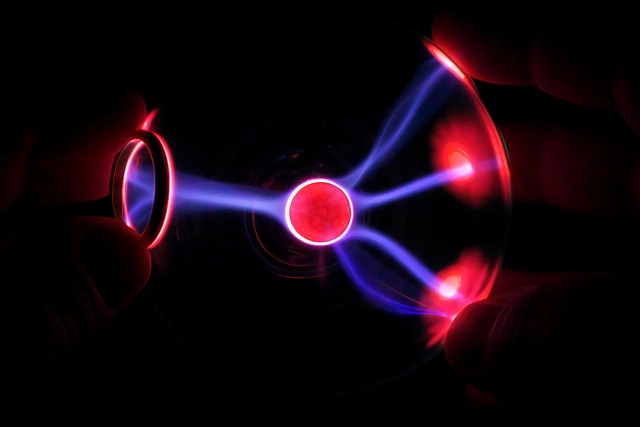Platelet-Rich Plasma (PRP) is a groundbreaking, natural treatment for sports-related muscle injuries, accelerating recovery without synthetic substances. PRP leverages a patient's own blood to concentrate growth factors that stimulate cell reproduction, angiogenesis, and collagen synthesis. Clinical studies have shown its effectiveness for various muscle injuries, making it a preferred choice among athletes seeking faster, safer healing. As an adjunctive therapy, PRP is integrating into standard treatment plans, with advancements in technology enabling more precise preparation and exploration of novel applications for optimal recovery outcomes.
“Discover the transformative potential of Platelet-Rich Plasma (PRP) in revolutionizing post-surgical recovery for sports injuries. This cutting-edge therapy is reshaping sports medicine, offering a natural and effective approach to healing. From understanding PRP’s basic mechanics to exploring its scientific validity in muscle repair, this article delves into the current trends and future prospects of integrating PRP into treatment plans, emphasizing its role in accelerating recovery for athletes.”
Understanding Platelet-Rich Plasma (PRP): An Overview
Platelet-Rich Plasma (PRP) is a groundbreaking treatment option gaining traction in sports medicine, especially for post-surgical recovery from muscle injuries. It involves extracting a patient’s own blood and separating it to isolate platelets with a high concentration of growth factors. These platelets are then injected back into the injured area, such as torn muscles or tendons. The growth factors released by the platelets stimulate healing by promoting cell reproduction, angiogenesis (new blood vessel formation), and collagen synthesis.
PRP therapy offers a natural way to accelerate the body’s inherent healing process without invasive procedures or synthetic substances. It has shown promising results in clinical studies for various sports-related muscle injuries, making it a popular choice among athletes seeking faster recovery times. The convenience of using a patient’s own blood also reduces the risk of adverse reactions associated with foreign substance injections.
How PRP Facilitates Post-Surgical Recovery for Sports Injuries
Platelet-rich plasma (PRP) is a cutting-edge therapy that has gained significant attention in the field of sports medicine. It plays a pivotal role in accelerating post-surgical recovery for various muscle injuries commonly encountered in athletes. PRP works by harnessing the body’s natural healing mechanisms; it contains a high concentration of platelets, which are rich in growth factors essential for tissue repair and regeneration.
When administered after surgery, PRP facilitates faster healing by promoting angiogenesis (the formation of new blood vessels), stimulating fibroblast activity, and encouraging the growth of healthy connective tissues. This process helps reduce inflammation, improve tissue strength, and accelerate muscle repair, ultimately leading to quicker recovery times for athletes suffering from sports-related injuries.
The Science Behind PRP's Efficacy in Muscle Healing
Platelet-rich plasma (PRP) has emerged as a promising treatment option for sports-related muscle injuries due to its inherent ability to accelerate healing processes. The concept is grounded in the fact that PRP contains an elevated concentration of platelets, which are known to play a pivotal role in blood clotting and the body’s natural repair mechanism. When injected into injured muscles, these concentrated platelets trigger a cascade of events. They release growth factors and bioactive proteins that stimulate fibroblasts—cells responsible for collagen production—promoting tissue regeneration and enhancing muscle healing.
The science behind PRP’s efficacy in muscle injuries is well-documented. Numerous studies have shown that PRP treatment can significantly reduce inflammation, promote angiogenesis (the formation of new blood vessels), and foster the growth of healthy muscular tissue. By harnessing the body’s natural healing capabilities, PRP offers a minimally invasive approach to post-surgical recovery, potentially reducing rehabilitation time and improving overall patient outcomes for athletes suffering from muscle injuries.
Integrating PRP into Sports Medicine Practices: Current Trends and Future Outlook
The integration of Platelet-Rich Plasma (PRP) into sports medicine practices has gained significant traction in recent years, driven by its potential to accelerate post-surgical recovery for athletes suffering from muscle injuries. Current trends show a growing acceptance of PRP as an effective adjunctive therapy, with many clinics and hospitals incorporating it into their standard treatment protocols. This shift is fueled by promising clinical outcomes, as studies have demonstrated PRP’s ability to enhance tissue repair, reduce inflammation, and improve functional recovery in various sports-related injuries.
Looking ahead, the future outlook for PRP in sports medicine appears bright. Advancements in technology are enabling more precise preparation of PRP, enhancing its therapeutic potential. Researchers are also exploring novel applications, such as using PRP in combination with other regenerative therapies or stem cell treatments, to further optimize recovery outcomes. As the body of scientific evidence continues to grow, it’s expected that PRP for muscle injuries will become an increasingly integral part of sports medicine practices worldwide.
Platelet-rich plasma (PRP) emerges as a powerful tool in the realm of sports medicine, offering enhanced post-surgical recovery for athletes suffering from muscle injuries. By harnessing the body’s natural healing mechanisms, PRP facilitates faster and more effective muscle regeneration. As research continues to evolve, integrating PRP into practices becomes an increasingly popular trend, promising a brighter future for athletic rehabilitation. This innovative approach holds immense potential to revolutionize how we address sports-related injuries, ensuring athletes can return to their active lifestyles promptly and safely.
